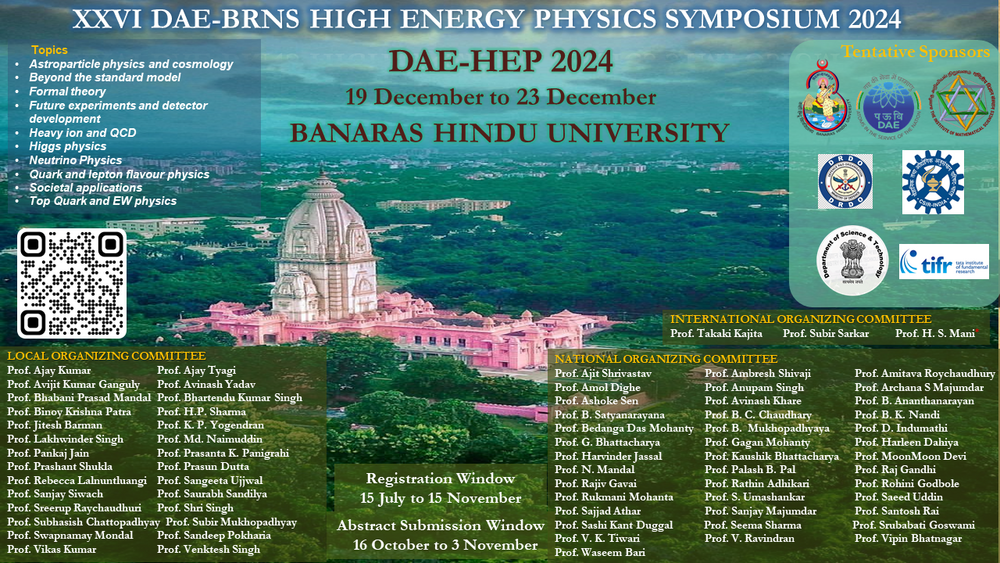Speaker
Description
Strongly interacting massive particle (SIMP) has become one of the promising dark matter (DM) candidates due to its capability of addressing the small-scale anomaly, where the final DM abundance is set via the freeze-out of $3\rightarrow 2$ or $4\rightarrow 2$ annihilation process involving solely the dark sector particles. In this work, we explore the freeze-out of SIMP DM during the inflationary reheating epoch. During reheating, the radiation energy density evolves differently based on the shape of inflaton potential and spin of its decay products than the standard radiation-dominated picture; as a result, in this scenario, the freeze-out temperature varies distinctly with DM mass compared to the standard case. Large entropy injection due to inflaton decay demands a smaller cross-section to satisfy the observed relic than the standard radiation-dominated freeze-out case. The required cross-section, satisfying the relic density constraint and the maximum allowed thermally averaged cross-section by the unitarity of the $S$-matrix, set an upper limit on the DM mass. The upper bound on the mass of the dark matter for $3\rightarrow2$ ( $4\rightarrow2$ ) is $1$ GeV ($7$ MeV), assuming a radiation-dominated background. Interstingly, these limits get relaxed to $10^6$ ($10^4$) GeV for $3\rightarrow2$ ( $4\rightarrow2$ ) SIMP dark matter for quadratic inflaton potential. We find that a small amount of DM parameter space survives for reheating with quadratic inflaton potential after considering the lower bound of reheating temperature, put by the latest CMB observation depending on the inflationary models. In the case of the quartic inflaton potential, the allowed DM parameter space gets reduced compared to the quadratic case.
| Field of contribution | Phenomenology |
|---|

